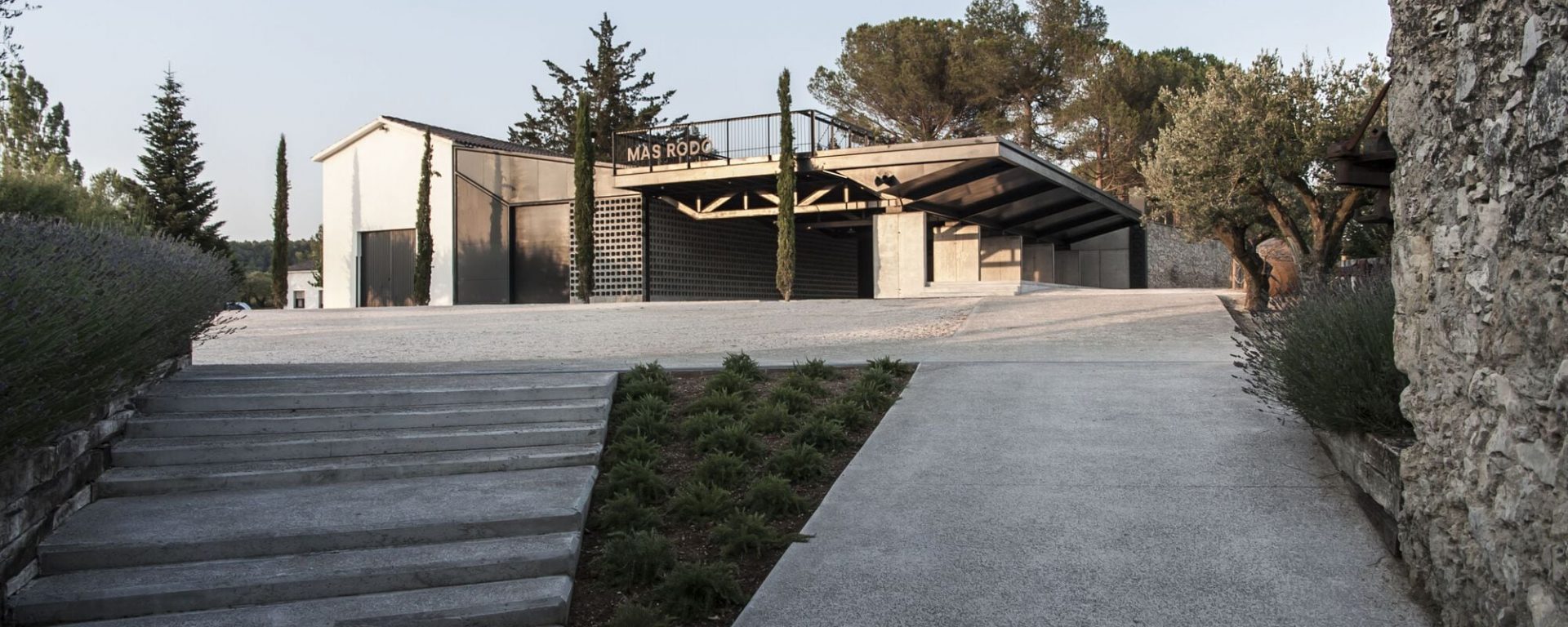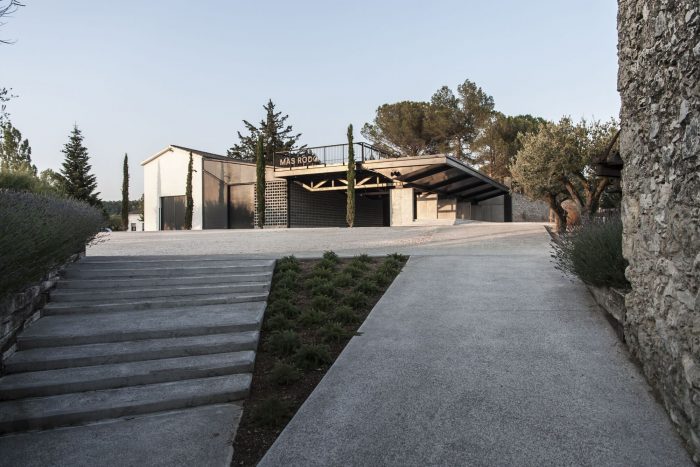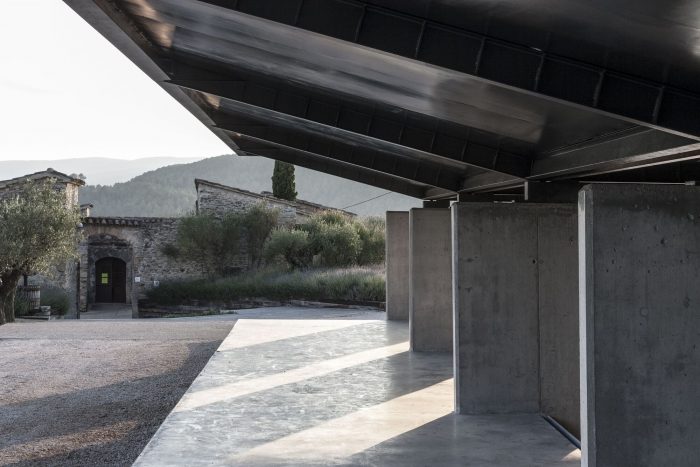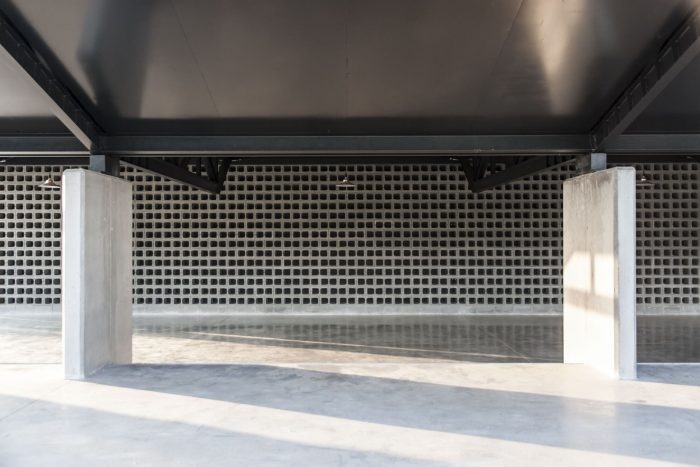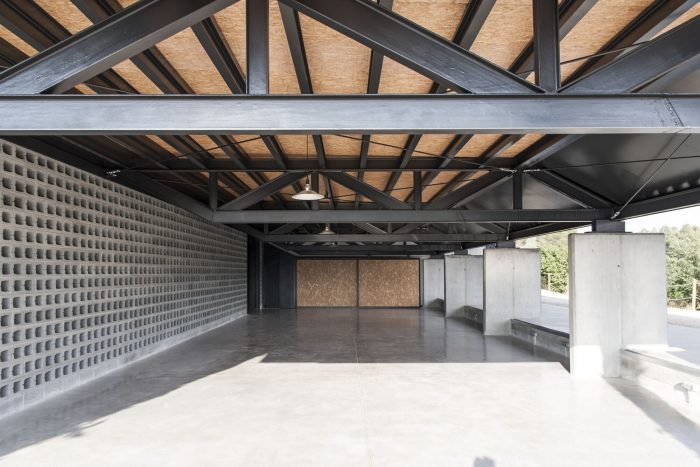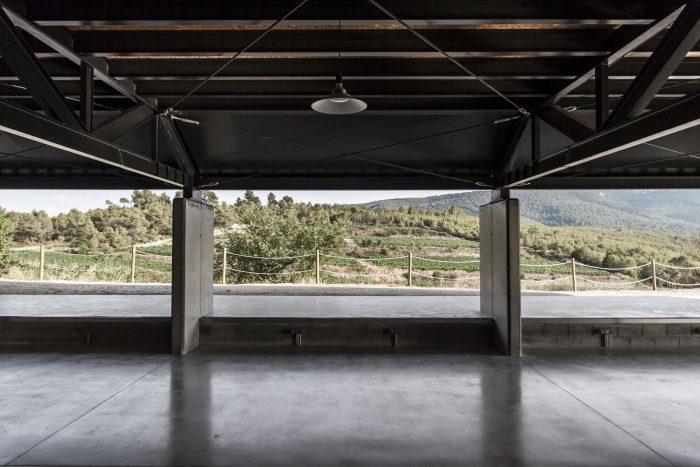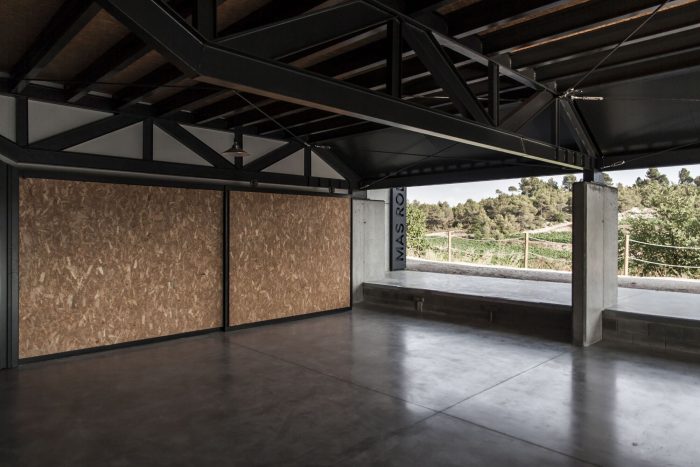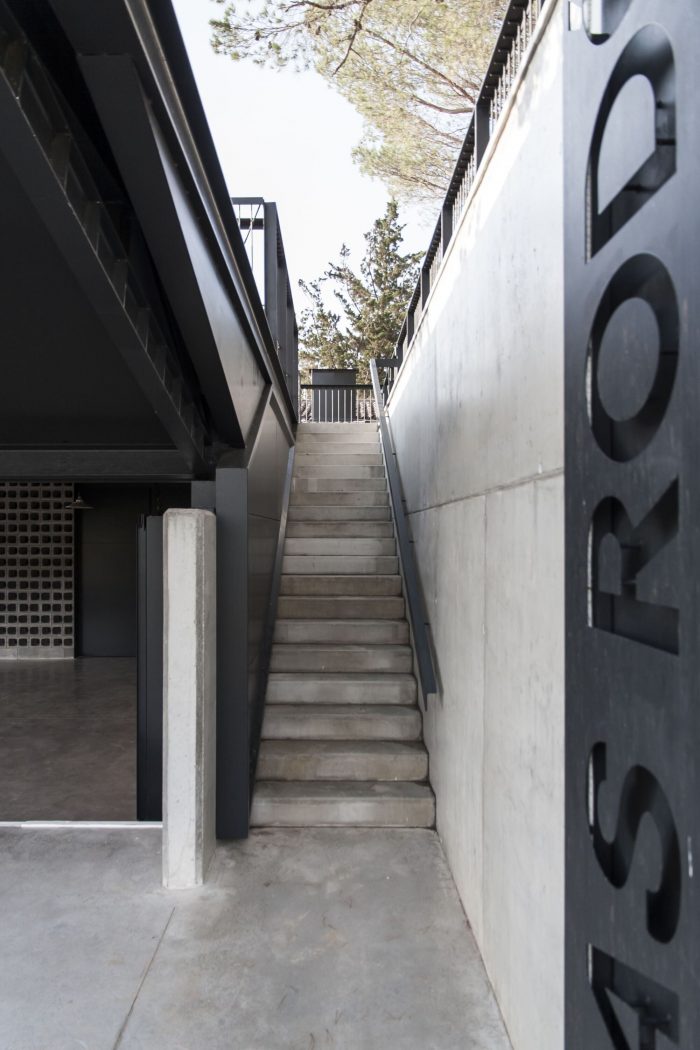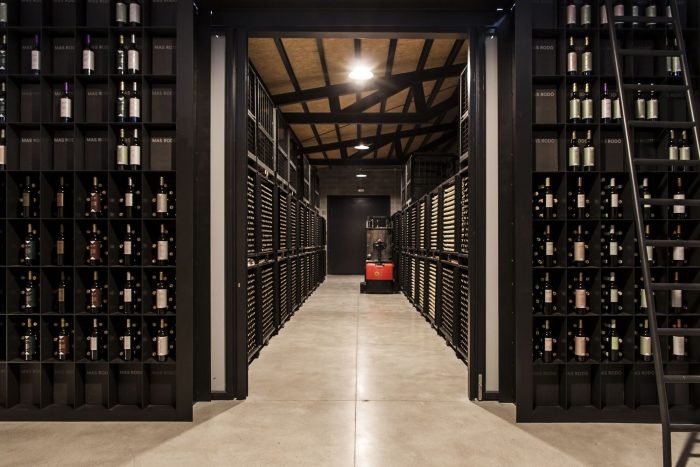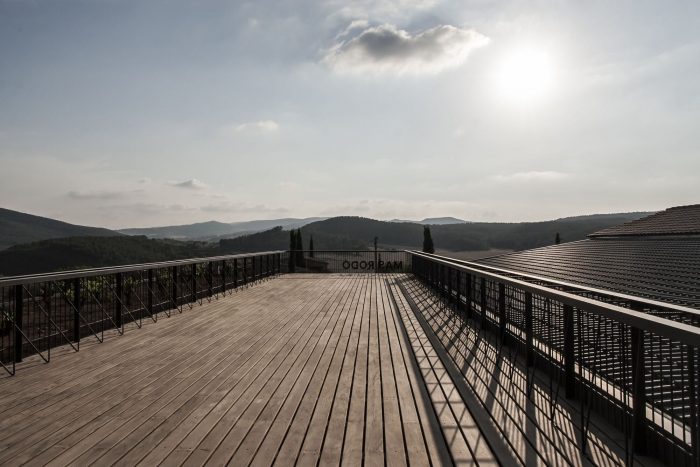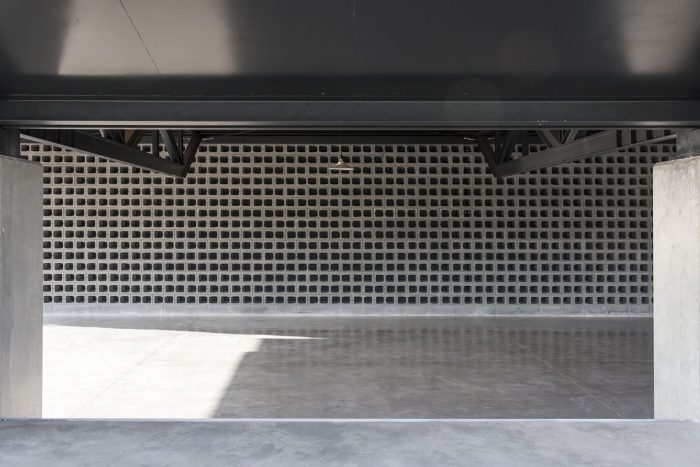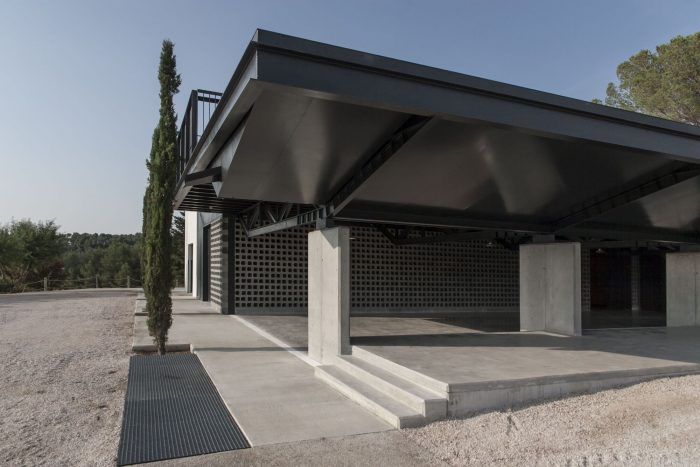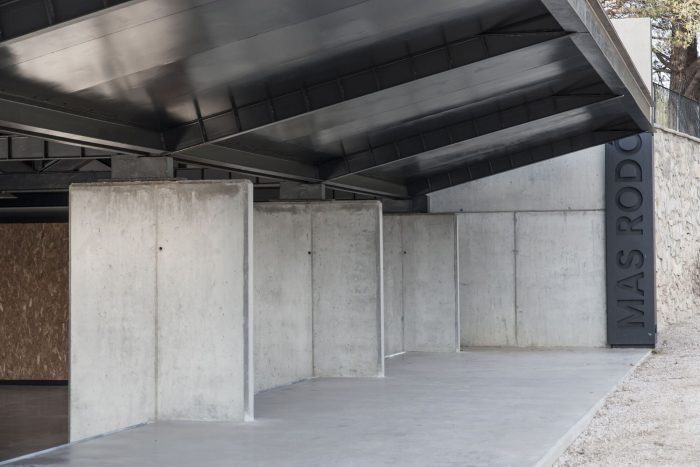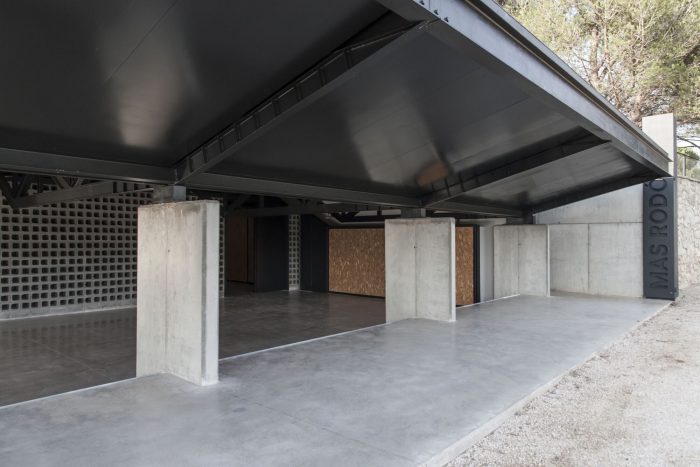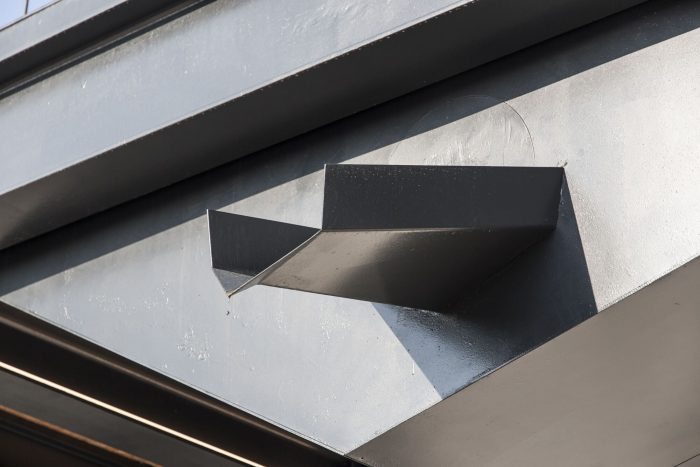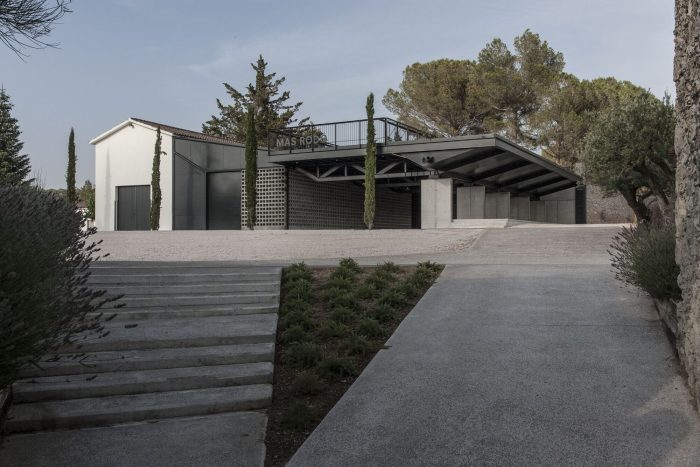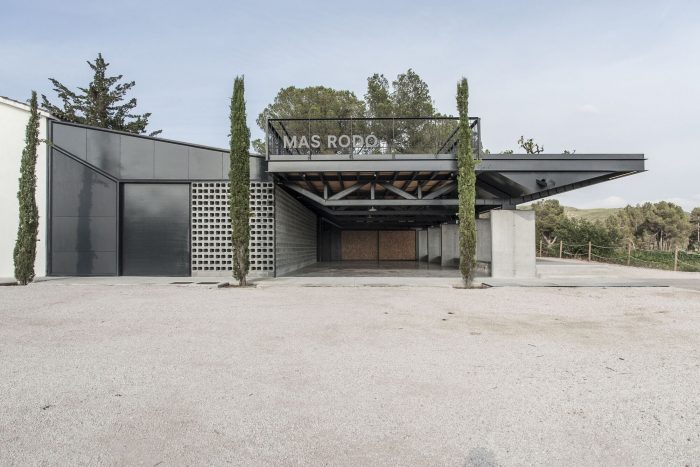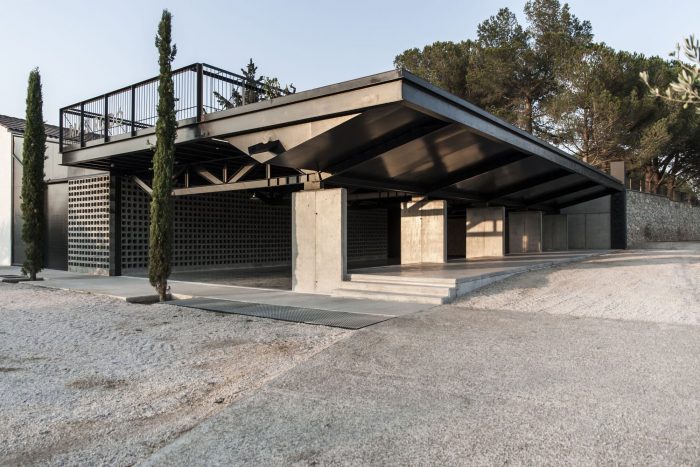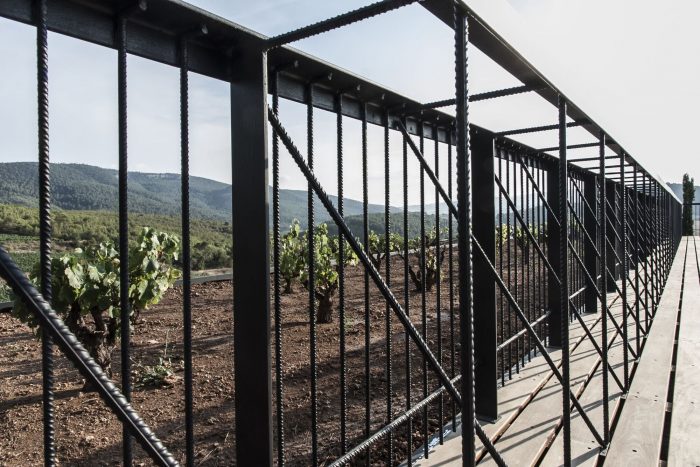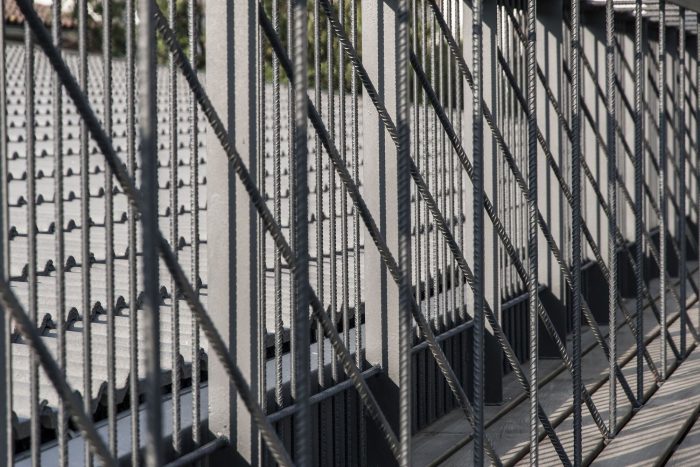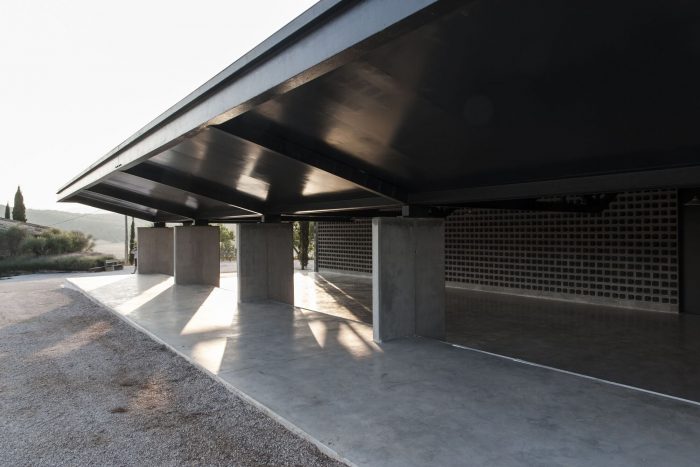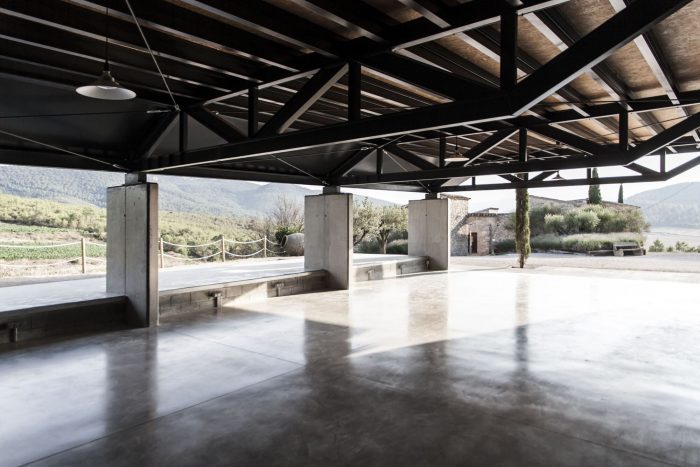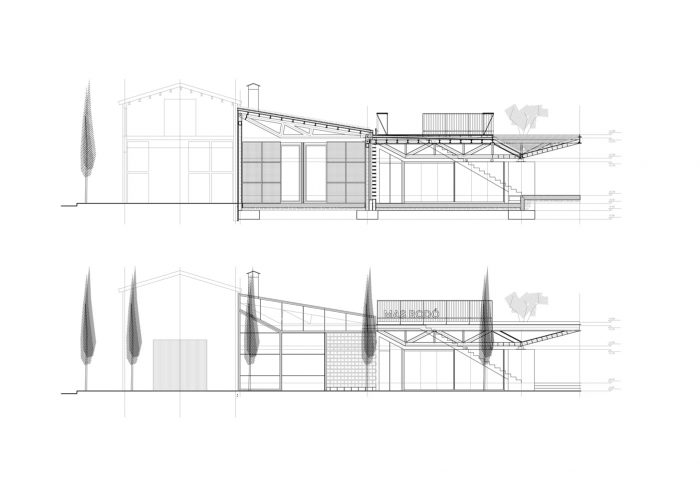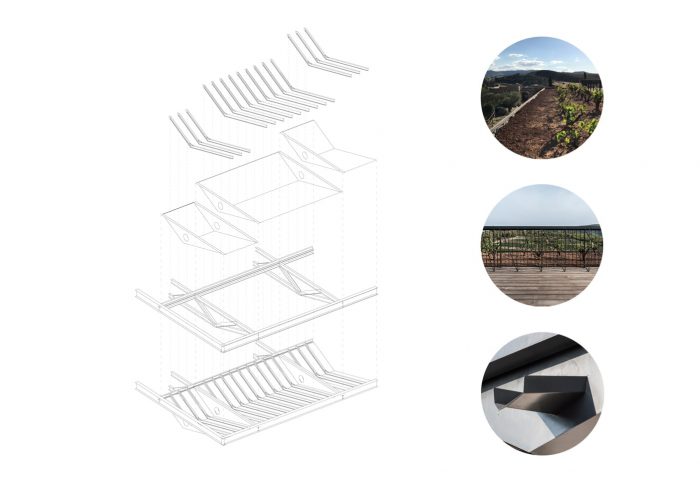在经历了近十年短暂但成功的优质葡萄酒酿造轨迹后,Mas Rodó出现了对物流、酒瓶陈酿和品酒空间的需求。该计划敦促阐明和组织现有的船厂建筑和位于加泰罗尼亚老式翻新别墅的酒厂之间的空间,同时它必须对双重计划作出回应。
After a brief but successful trajectory of almost a decade of making excellent quality wines, the need for a space for logistics, bottle aging, and wine tasting arises in Mas Rodó. The program urges to articulate and organize the space between the existing shipments building and the winery located in an old renovated Catalan cottage, while it has to provide a response to a dual program.
一方面,新的建筑必须容纳一个用堆叠的铁笼子组织的瓶装葡萄酒陈酿的建筑,以及简化物流,同时为成品和运输的仓库提供适当的沟通。另一方面,它必须补充酒庄的活动,为Mas Rodó葡萄酒的品尝和展览提供空间,向公众开放,寻找环境和酒庄之间的直接联系。
On the one hand, the new building has to accommodate a building for the aging of wine in bottles, organized in stacked steel cages, as well as streamline the logistics, while providing appropriate communication with the warehouse for the finished product and shipments. On the other, it has to complement the activity of the winery with a space for the tasting and the exhibition of the Mas Rodó wines open to the public, looking for a direct link between the environment and the winery.
首先需要一个安静的、干燥的、温和的、昏暗的空间。因此,在旧仓库的基础上,建议建造一个半地下室。这使得多价门廊成为一个 “枕头空间”,保护它不受南方辐射的影响,而混凝土块的通风外墙允许内部环境的冷却,被动式系统的设想。
The first calls for a quiet, dry, tempered, and dimmed space. As a result, attached to the old warehouse, a semi-basement is proposed. This makes of the polyvalent porch a ‘pillow space’ that protects it from the radiation of the south, while a ventilated façade of concrete blocks allows the cooling down of the interior environment, conceived as a passive system.
相反,后者被建议为一个向环境开放的半外部空间。一个45厘米的高度跳跃允许收缩内部空间,框住景观,并提供一个坐的地方,同时它确实连接了入口层和通往葡萄园的路径。
On the contrary, the latter is proposed as a semi-exterior space open to the environment. A 45-centimeter leap in height allows to contract the interior space, frame the landscape, and offer a place to sit, while it does connect the access level with the path leading to the vineyard.
在这两者之间,一个过渡空间衔接了两个项目:可以参观所有年份的葡萄酒的历史档案,而垂直品酒–同样的酒,不同的收获年–可以为独家访问或专业人士进行。
Between both, a transition space articulates both programs: a historical archive of wines of all vintages can be visited, while vertical tastings – same wine, different harvest year – can take place for exclusive visits or professionals.
一个由墙壁和混凝土屏风组成的结构系统被构思出来,作为路面的延续–巨大而坚固–支撑着金属桁架的轻型系统。一个轻量级的–几乎没有重量的屋顶–试图用三种不同的用途来覆盖这个空间:一个用于瓶中陈酿的混凝土瓦片屋顶,一个无障碍的木质平台,它主导着景观–与房子的花园有关–由一个酒吧形式的扶手封闭;以及一个绿色悬臂,上面有不同的葡萄品种–所有这些都存在于庄园内–通过一个富有表现力的巨石柱来排水。
A structural system of walls and concrete screens is conceived, as a continuity of the pavement – massive and resistant – that supports a light system of metal trusses. A lightweight – almost weightless roof – seeks to cover the space with three different uses: a roof of concrete tiles for the aging in bottle program, an accessible deck in wood which dominates the landscape – in relation to the garden of the house – closed by a handrail in the form of a bar for tasting; and a green cantilever with different vine varieties – all existing within the Estate – which drains through an expressive gargoyle.
悬臂的几何形状遵循了老别墅–酒厂–的屋顶倾斜度,它与老别墅进行了对话。它被设想为一个覆盖门廊平台的悬臂,作为一个遮阳板,提供阴凉并收缩下面的空间,同时它确实通过所含土壤的热质量带来了新鲜感。因此,它是一个用于高架葡萄园的轻型结构。一个没有重量的葡萄园。
The geometry of the cantilever follows the roof inclination of the old cottage – the winery – with which it does dialogue. It is conceived as a cantilever covering the terrace of the porch, as a visor to provide shade and contract the space below while it does bring freshness through the thermal mass of the soil contained. It is therefore a light structure for an elevated vineyard. A weightless vineyard.
Architects: SALA FERUSIC Architects
Area : 5382 ft²
Year : 2017
Photographs :SALA FERUSIC Architects
Lead Architects : Carles Sala, Relja Ferusic
Main Contractor : Beta Conkret
Metalwork And Metallic Structure : Serrallería Belluch
Structural Calculation And Executive Construction Management : Josep María Estivill
Country : Spain

